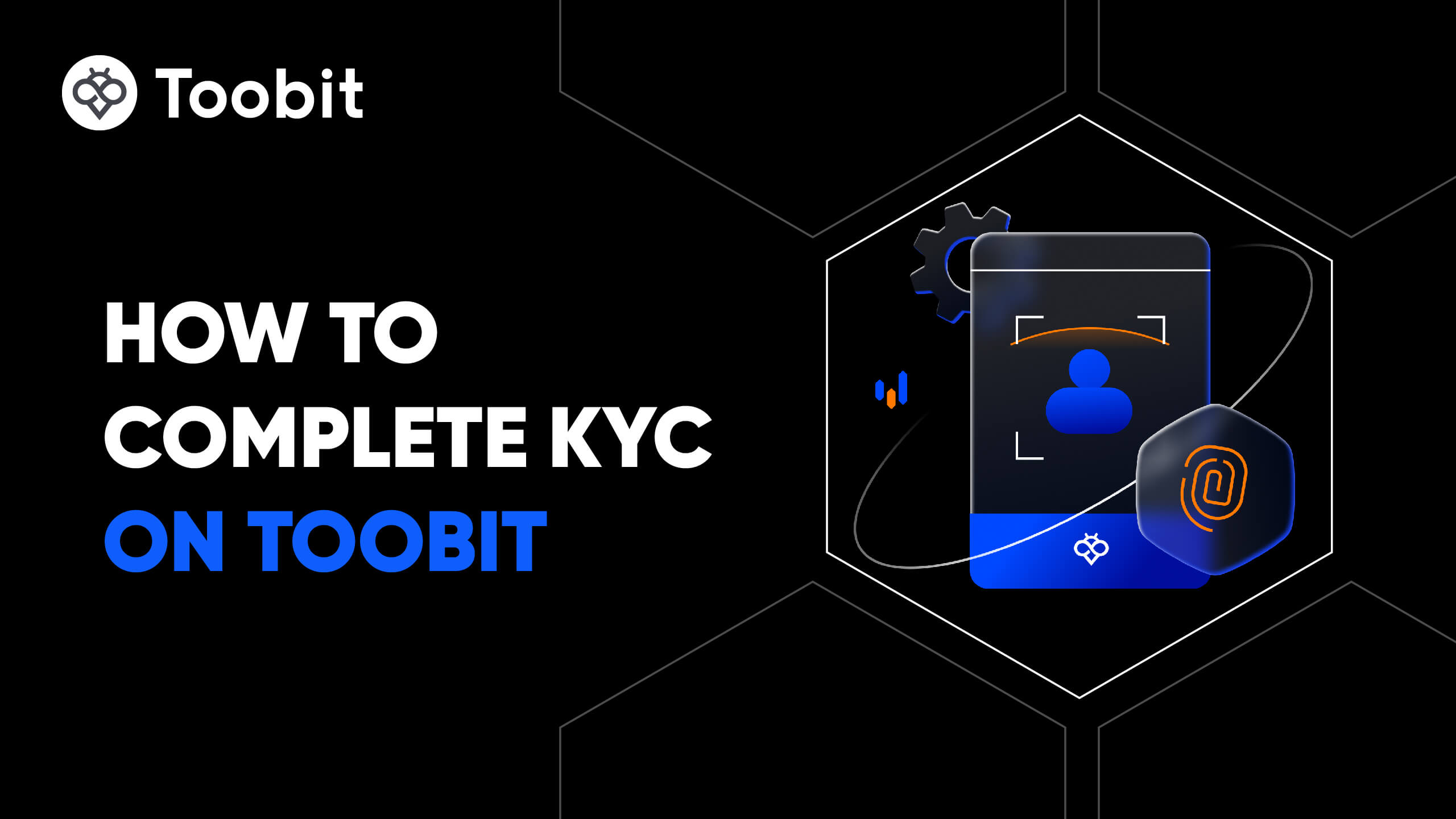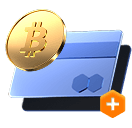Ethereum price
ETHEthereum market info
Live Ethereum price today in USD
How much is 1 ETH worth in ?
About Ethereum(ETH)
Ethereum price history
Why does the price of Ethereum always fluctuate?
What factors affect the performance of Ethereum prices?
Global Ethereum prices
How to buy Ethereum
Create your free Toobit account
Sign up on Toobit with your email address/mobile phone number and country of residence, and create a strong password to secure your account.
Verify your identity
Complete identity verification by submitting your personal details and a valid photo ID.
Add a payment method and buy Ethereum (ETH)
Add a credit/debit card or bank account after verifying your Toobit account. Use multiple payment options to buy Ethereum on Toobit.
Trade ETH perpetual futures
After signing up on Toobit and buying USDT or ETH tokens, you can start trading derivatives, including ETH futures and margin trading to increase your income.
Join ETH copy trading with lead traders
After signing up on Toobit and successfully buying USDT or ETH tokens, you can also start copy trading by following Lead Traders.
Where can I buy Ethereum?
Buy crypto on the Toobit app
Sign up within minutes to purchase crypto via credit card or bank transfer.
Trade on Toobit
Deposit your cryptocurrencies to Toobit and enjoy high liquidity and low trading fees.
Video section — quick verification, quick trading

How to complete identification on Toobit and protect yourself from fraud
- 1.Log in to your Toobit account.
- 2.If you're new to Toobit, watch our tutorial on how to create an account.
- 3.Click on the profile icon in the upper right corner of the navigation bar, then tap on Identification page.
FAQ About Ethereum (ETH)
What are the main applications of Ethereum?
Ethereum supports a wide range of decentralized applications (dApps) across several categories.1. Financial applications (DeFi): Lending platforms, stablecoins, derivatives, decentralized exchanges (DEXs), and tokenized assets enable users to manage funds without relying on banks or intermediaries.2. Semi-financial applications: These combine financial and non-financial elements, such as automated bounties for problem-solving or prediction markets.3. Non-financial applications: Tools like decentralized voting systems, identity verification, and community-led governance platforms operate without financial functions.Thanks to smart contracts, these applications run autonomously on the Ethereum blockchain, offering transparency, automation, and trustless execution.What are the further applications of Ethereum?
Beyond finance and basic decentralized applications (dApps), Ethereum supports advanced use cases across multiple industries thanks to its flexible smart contract functionality. Key applications include:1.Smart savings wallets: Wallets with customizable rules for withdrawals, shared access, and built-in safeguards to protect personal assets.2. Decentralized insurance: Smart contracts that automatically execute payouts based on real-world events, such as weather, enabling crop or disaster insurance without intermediaries.3. Trustless data feeds (Oracles): Ethereum can host decentralized oracles that provide reliable data, like ETH/USD prices, for use in financial contracts, prediction markets, and other applications.4. Smart multisignature escrow: Wallets with multiple levels of access for secure group fund management or business treasury solutions.5. Decentralized cloud computing: Community-based computing networks that support scientific research or simultaneous computational tasks.6. Peer-to-peer gambling: Transparent, low-fee gambling platforms that operate without traditional betting operators.7. Prediction markets and governance: Platforms for betting on real-world outcomes that can also inform governance decisions based on predicted results.Ethereum’s programmability allows developers to create systems that are decentralized, automated, and often more secure than traditional software solutions.What does Ethereum's scalability mean?
Ethereum’s scalability refers to its ability to handle more transactions and applications without slowing down or becoming too expensive. Like Bitcoin, every transaction is processed by all nodes, which can limit throughput and sometimes cause network congestion and high gas fees.As demand grows, especially with many decentralized applications (dApps) running on Ethereum, scalability becomes important. Without improvements, the network could become centralized, as only large operators might be able to store and verify the entire blockchain.To address this, Ethereum is using solutions such as Layer 2 rollups, sharding, and stateless clients. These technologies aim to increase transaction speed, reduce storage needs, and keep the network secure and decentralized as usage grows.What makes Ethereum unique?
Ethereum is the first blockchain to introduce smart contracts, which are self-executing programs that run without intermediaries. These contracts allow trustless transactions and decentralized applications (dApps), turning blockchain from a system for value transfer into a platform for programmable finance and automation.Ethereum also supports thousands of ERC-20 tokens, enabling other cryptocurrencies to be created on its network. Many well-known digital assets, including USDT, LINK, and BNB, started as Ethereum-based tokens. Combined with its decentralized structure and security, Ethereum powers DeFi, NFTs, and Play-to-Earn gaming applications.How is Ethereum different from Bitcoin?
Bitcoin is mainly a decentralized digital currency used for peer-to-peer value transfer. Ethereum, by contrast, is a decentralized platform. It is a programmable blockchain that lets developers create and run smart contracts and decentralized applications (dApps).Think of Bitcoin as a single application for payments, while Ethereum is a platform for building many different applications.How many Ether coins are there in circulation?
Unlike Bitcoin, Ethereum does not have a fixed supply. There are currently over 120 million ETH in circulation, and this number changes over time based on network activity and upgrades.With the shift to Proof of Stake and the Ethereum 2.0 upgrade, Ether issuance has slowed. Features like EIP-1559 burn a portion of transaction fees, permanently removing them from circulation. This supply model helps balance inflation and demand over time.What is Ethereum 2.0
Ethereum 2.0 is the network upgrade that transitions Ethereum from Proof-of-Work (PoW) to Proof-of-Stake (PoS). This update is part of Ethereum's plan to improve scalability, security, and sustainability.Ethereum 2.0 introduces sharding, which splits the network into smaller chains to increase transaction capacity. The current Ethereum chain will become the Beacon Chain, acting as a settlement layer for smart contract interactions on other chains.To clarify the network structure, the Ethereum Foundation rebranded Ethereum 1.0 as the execution layer and Ethereum 2.0 as the consensus layer. Recent tests, including the mainnet shadow fork, show that the network is approaching the final stages of this transition.What is the difference between Ethereum and Ethereum 2.0 (The Merge)?
The original Ethereum network used a Proof-of-Work (PoW) consensus mechanism, similar to Bitcoin. Ethereum 2.0 refers to a series of upgrades, the most important being The Merge, which switched the network to Proof-of-Stake (PoS).This change reduced Ethereum's energy use by over 99%, improved network security, and created the foundation for future scalability upgrades.What is the Ethereum Shanghai upgrade?
The Ethereum Shanghai upgrade allows Ether stakers on the Beacon Chain to unstake their Ether and withdraw rewards. After The Merge, Ethereum moved from Proof-of-Work (PoW) to Proof-of-Stake (PoS), with validators staking 32 ETH to secure the network. Until Shanghai, staked Ether and rewards could not be withdrawn.Also called Shapella, the upgrade is a hard fork that implements five EIPs, with EIP-4895 enabling withdrawals. Shanghai refers to the execution layer, while Capella refers to the consensus layer.Testnets successfully executed the upgrade: Zhejiang on February 7, 2023, Sepolia on February 28, 2023, and Goerli on March 15, 2023. After the mainnet upgrade, expected in March 2023, over 17.5 million ETH became available for withdrawal.How does Ethereum's proof-of-stake (PoS) consensus work?
In Proof-of-Stake (PoS), validators are chosen to create new blocks and verify transactions based on the amount of Ether they stake as collateral. Validators are encouraged to act honestly because dishonest behavior can lead to their staked Ether being slashed or destroyed.This system makes Ethereum more secure, uses less energy, and is easier to participate in compared to the previous Proof-of-Work system.How to mine Ethereum?
Mining Ethereum involves using computer hardware to solve mathematical puzzles to validate transactions on the network. Here’s how you can mine Ethereum:1. Get the right hardware: You need a computer with a graphics processing unit (GPU). A more powerful GPU can solve puzzles faster and earn more Ether. 2. Download mining software: Choose software compatible with your hardware, such as Claymore, Ethminer, or PhoenixMiner, and install it. 3. Create an Ethereum wallet: Set up a wallet to store the Ether you mine. Options include online wallets, hardware wallets, and software wallets. 4. Join a mining pool: Mining alone can be difficult. Joining a pool lets you combine efforts with other miners, with rewards distributed based on each member’s contribution. 5. Configure your software: Enter the mining pool’s details, your wallet address, and your hardware information into the software. 6. Start mining: Run the software to solve puzzles. Successfully solving a puzzle earns you Ether. 7. Monitor progress: Track your mining statistics and payouts through the pool’s website or the software to ensure your mining is effective. Mining Ethereum uses a lot of energy and may not always be profitable, especially as difficulty rises. Consider electricity costs and hardware maintenance before deciding to mine.What are the benefits of trading ETH to USDT?
Trading ETH/USDT offers several benefits:1. Stability: USDT is pegged to the U.S. dollar, providing a stable option that can help reduce exposure to cryptocurrency volatility. 2. Portfolio protection: Converting ETH to USDT allows traders to hedge against sudden ETH price changes. 3. Trading opportunities: The ETH/USDT pair can be used for arbitrage and other trading strategies to optimize returns.Are there any risks associated with trading ETH to USDT?
Trading Ether (ETH) for Tether (USDT) carries some risks, similar to other cryptocurrency trading:1. Stablecoin risks: USDT is generally stable, but there is a chance of price changes or issues with how the stablecoin is backed. 2. Exchange and platform risks: Use reputable exchanges and platforms, as fraud or security breaches can put your assets at risk. 3. Security risks: Follow basic security practices, such as enabling two-factor authentication and keeping your wallets safe.What is ETH/USDT?
ETH/USDT is a trading pair that shows the exchange rate between Ethereum (ETH) and Tether (USDT). This pair allows traders to swap ETH for USDT or USDT for ETH, providing a straightforward way to manage assets and respond to market changes.What are the benefits of trading ETH/USDT?
Trading ETH/USDT offers several benefits:1. Stability: USDT is pegged to the U.S. dollar, providing a stable option that can help reduce exposure to cryptocurrency volatility. 2. Portfolio protection: Converting ETH to USDT allows traders to hedge against sudden price changes. 3. Trading opportunities: The ETH/USDT pair can be used for arbitrage and other trading strategies to optimize returns.How can investors use ETH/USDT for portfolio diversification?
Investors can use ETH/USDT to diversify their cryptocurrency holdings by including both Ether (ETH) and Tether (USDT) in their portfolios. This spreads risk across different assets and can provide stability during periods of market volatility.What are the risks associated with trading ETH/USDT?
Trading ETH/USDT carries some risks, similar to other cryptocurrency trading pairs: 1. Market volatility: The ETH price can change quickly, which may affect your holdings even when paired with a stablecoin. 2. Regulatory changes: Updates to cryptocurrency regulations can affect trading rules and asset availability. 3. Liquidity risks: Low liquidity can make it harder to buy or sell large amounts without changing the market price. 4. Security risks: Using unsecure exchanges or wallets can put your funds at risk, so always follow basic security practices.What is gas and why is it needed on the Ethereum network?
Gas measures the computational work needed to execute transactions or smart contracts on the Ethereum network. Users pay gas fees to compensate validators for the energy and resources they use. This system helps prevent network spam, manage resources efficiently, and maintain the stability and security of the Ethereum blockchain.What are decentralized applications (dApps) and how are they built on Ethereum?
Decentralized applications (dApps) are digital applications that run on a blockchain or peer-to-peer network instead of a single server. On Ethereum, dApps use smart contracts for backend operations while using a standard web frontend for the user interface. These applications support the Web3 ecosystem, enabling decentralized finance (DeFi) platforms, non-fungible token (NFT) marketplaces, and GameFi projects.What is the native cryptocurrency of the Ethereum network?
The native cryptocurrency of Ethereum is Ether (ETH). Often mistakenly called ""Ethereum,"" ETH is the network's fuel.It is used to:• Pay gas fees for transactions and smart contracts• Stake to help secure the network under Proof-of-Stake (PoS)• Serve as a decentralized digital currency within the Ethereum ecosystemHow is Ethereum connected to the rise of decentralized finance (DeFi)?
Ethereum's smart contracts are the foundation of decentralized finance (DeFi). They allow the creation of lending protocols, decentralized exchanges (DEXs), stablecoins, and other financial tools without traditional intermediaries like banks.The composability of these contracts, often called ""Money Legos,"" lets developers build an open and permissionless financial ecosystem on Ethereum.What is the Ethereum Virtual Machine (EVM) and why is it crucial to the network?
The Ethereum Virtual Machine (EVM) is a runtime environment that executes smart contract code.Key functions:• Consensus and predictability: The EVM ensures that every node executes the same code with the same results, maintaining network consensus. • Security: It isolates smart contracts from the rest of the network, preventing malicious code from affecting Ethereum's integrity.Why might the Ethereum Price I see differ slightly from other exchanges or platforms?
Because different exchanges and data aggregators have distinct order books, liquidity, and trade volumes, the ETH Price can vary slightly across platforms. Differences also stem from the timing of the last trade on each platform, regional demand/supply disparities, or exchange-specific markup/spread. Always check which exchange or data feed you are referencing when comparing Ethereum Price across sources.Is the displayed ETH Price inclusive of transaction fees, network gas fees, or slippage?
No, the quoted ETH Price reflects the market rate for one ETH, but does not include transaction fees, network gas fees, or potential slippage. Actual costs when buying, selling, or transferring Ethereum may therefore differ from the simple ETH Price shown. Users should account separately for those additional costs.What’s the difference between “Ethereum Price” and “Market Capitalization” on the price page?
Ethereum Price refers to the current value of 1 ETH in USD (or other fiat).Market Capitalization is calculated as Ethereum Price × circulating supply of ETH, giving you the total value of all ETH in circulation.Together they help users understand both individual coin value and the overall market size of Ethereum.What could cause sudden sharp swings in ETH Price during short periods of time?
Sharp ETH Price swings often result from large market orders (“whales”), sudden liquidity shifts, macroeconomic news or regulatory announcements, or large-scale liquidations in derivatives markets. Because Ethereum trading is global and 24/7, even a single major sell or buy can quickly move the Ethereum Price — especially during low-liquidity periods.Can I use ETH Price for currency conversions (e.g. to EUR, JPY, etc.) directly?
The ETH Price on the page is usually denominated in USD. If you want to convert ETH Price into another fiat currency (e.g. EUR or JPY), you’ll need to apply the current USD-to-your-currency exchange rate. For accurate conversion, using a real-time currency converter along with the displayed Ethereum Price is recommended.What does “24h High / 24h Low” mean for ETH Price, and why is it relevant?
The “24h High” is the highest price at which ETH has traded in the last 24 hours; the “24h Low” is the lowest. These metrics help users gauge volatility, recent trading range, and short-term support/resistance zones. Tracking how the current Ethereum Price compares to these extremes can inform trading or investment timing.If the circulating supply of ETH changes, will the Ethereum Price automatically adjust?
Not necessarily. While supply changes (for example, due to staking, burns, or new issuance) affect the total number of ETH in circulation, the Ethereum Price depends on supply and demand. Even if circulating supply decreases, the ETH Price may remain stable or drop — or vice versa — depending on market demand, sentiment, and broader macro factors.Does the displayed Ethereum Price account for locked or staked ETH that isn’t circulating?
No, the displayed Ethereum Price and circulating supply reflect only ETH that is unlocked and actively trading. Locked or staked ETH (e.g. in smart contracts or staking) is typically excluded from “circulating supply,” so those tokens do not directly influence the publicly displayed Ethereum Price until they’re released or become tradable.Why Does the ETH Price Change So Frequently Throughout the Day?
The ETH Price fluctuates continuously because Ethereum is traded globally 24/7 with no market close. Every buy and sell order immediately affects supply and demand. Since Ethereum has no fixed maximum total supply and a circulating supply of around 120+ million ETH, price movements are driven primarily by market sentiment, trading volume, and macroeconomic factors rather than strict scarcity alone.What Are the Main Long-Term Drivers of Ethereum Price Growth?
The long-term Ethereum Price trend is influenced by:Network adoption and real-world use casesGrowth in DeFi, NFTs, and Layer-2 ecosystemsInstitutional participationETH staking and reduced liquid supplyToken burns under EIP-1559Because Ethereum’s total supply is dynamic (not capped) and the current circulating supply is ~120+ million ETH, demand growth plays a decisive role in long-term ETH Price appreciation.How Is the ETH Price on Exchanges Calculated?
The ETH Price displayed on most platforms is based on the latest executed trade or a volume-weighted average across multiple exchanges. Slight differences in liquidity and trading activity can cause small price variations. Regardless of platform, the circulating supply behind the Ethereum Price remains roughly 120+ million ETH and changes gradually over time.Why Does the Ethereum Price React Strongly to Network Upgrades?
Major upgrades (such as staking changes, scalability improvements, or gas optimizations) affect:Network efficiencyTransaction costsToken burnsValidator incentivesThese directly influence market confidence and demand for ETH, often triggering sharp ETH Price movements. Since Ethereum’s supply is flexible rather than capped, burn rate vs. issuance rate becomes a critical valuation factor.What Causes Sudden Drops in ETH Price During High Volatility?
Sudden ETH Price drops are often triggered by:Large leveraged liquidationsWhale sell-offsMacro events (interest rates, inflation data)Regulatory headlinesExchange outages or security incidentsThese short-term shocks do not change Ethereum’s non-capped total supply, which remains around 120+ million ETH in circulation and evolves slowly over time.Does Staking Reduce the Circulating Supply and Affect Ethereum Price?
Yes. ETH that is locked in staking is temporarily removed from liquid circulation, which can tighten available supply on exchanges. While it does not reduce Ethereum’s total supply permanently, reduced liquid supply can support higher ETH Price levels during periods of strong demand. Circulating supply remains near 120+ million ETH, excluding temporarily locked tokens.Why Does ETH Price Sometimes Move Independently from Bitcoin Price?
Although correlated, Ethereum Price can decouple from Bitcoin due to:DeFi growth cyclesNFT market activityLayer-2 adoptionETH staking demandProtocol-specific upgradesSince Bitcoin has a fixed supply and Ethereum does not, their valuation models differ significantly, allowing ETH Price to outperform or underperform BTC in certain market phases.Is Ethereum Price More Sensitive to Network Activity Than Bitcoin?
Yes. Ethereum Price reacts directly to:Transaction volumeSmart contract usageGas demandStablecoin settlement volumeBecause Ethereum is an active utility network and not just a store of value, fluctuations in usage have a more immediate effect on ETH Price, independent of its ~120+ million circulating supply.Why Does Ethereum Price Spike During DeFi or NFT Market Booms?
Many long-term investors believe Ethereum Price is undervalued because:It secures the largest smart contract ecosystem It handles massive stablecoin and DeFi volume It supports thousands of decentralized applications It benefits from continuous ETH burns Even without a capped total supply, Ethereum’s ~120+ million circulating ETH combined with accelerating real-world usage supports strong long-term valuation arguments.


